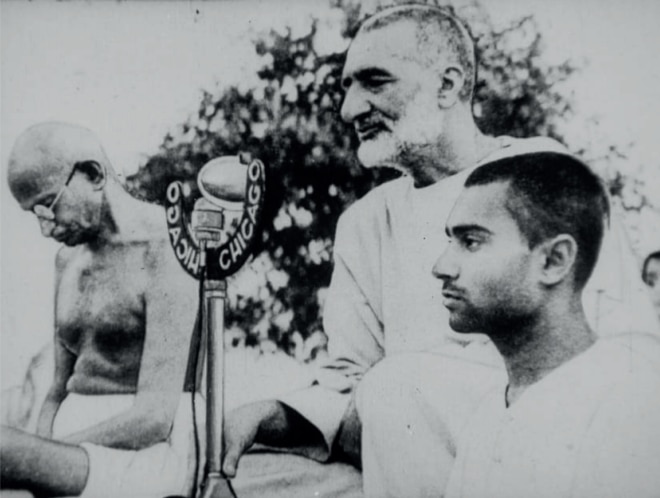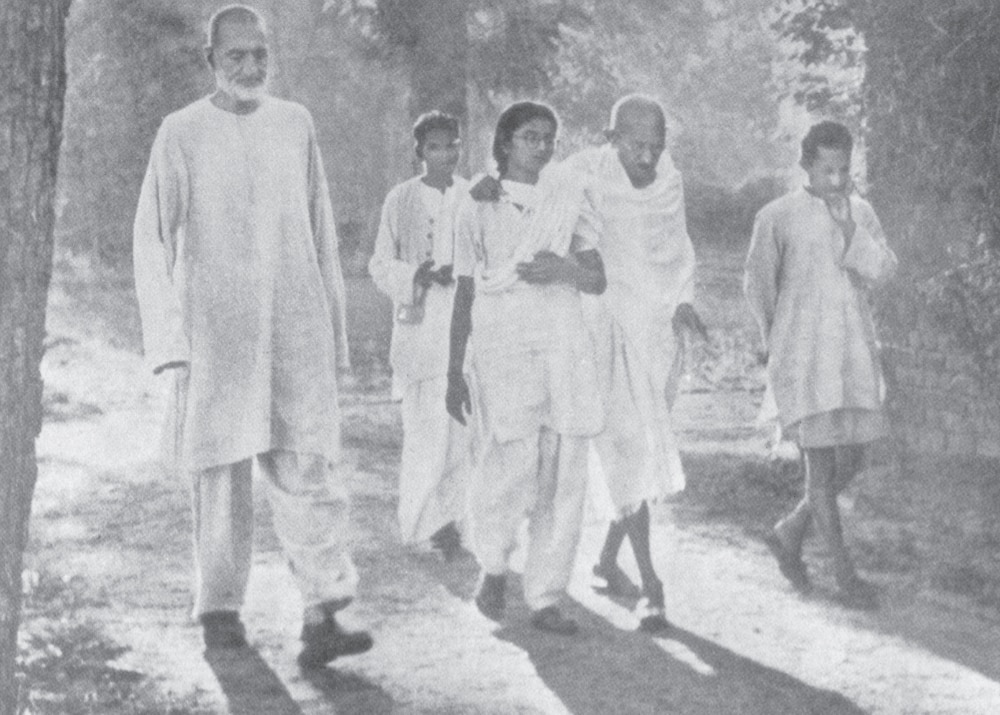A series looking at the high standard of morals of the Promised Messiahas and his Khulafa when receiving visitors in Qadian
Awwab Saad Hayat, Al Hakam
In the history of the Indian subcontinent, Khan Abdul Ghaffar Khan is a well-known political leader of the Pashtuns who preached the philosophy of non-violence in the British era. He was one of the biggest admirers of Mahatma Gandhi. Khan Abdul Ghaffar Khan’s own admirers used to call him bacha khan (king of chiefs) and sarhadi Gandhi (frontier Gandhi).

Khan Abdul Ghaffar Khan was born in 1890 in the village of Utmanzai in the Pakhtun tribal region. It is found, in historical records, that after gaining primary education at home, he studied in different places.
His father, Bahram Khan, belonged to the nobles of the area and was a landowner who kept company with landowners. He was respected and influential among the British officers. When he was unable to study locally, Khan Abdul Ghaffar Khan was sent by his father to study in different places; however, due to various constraints, he would return.
Khan Abdul Ghaffar Khan’s long political career had various ups and downs. In 1919, he entered politics by participating in the movement against the Rowlatt Act and spent six months in prison. Then, in 1920, he joined the Hijrat Movement and went to Afghanistan; however, he later returned due to the failure of the movement.
Thus, Khan Abdul Ghaffar Khan’s life was full of many tumultuous events and engagements which lasted till his demise on 20 January 1988.
In 2004, Pakistan’s famous publisher, Fiction House, located in Lahore, published a book, Aap Biti: Khan Abdul Ghaffar Khan, under the auspices of Zahoor Ahmad Khan. On page 17, in the context of his journey carried out during his years as a student, it says:
“[…] I turned to education once again. In those days, I went to Campbellpur [now Attock] with another friend [Abdul Aleem] and gained admission into Campbellpur High School afresh; however, it was extremely hot there and I could not adapt to [the heat]. I then left this place for Qadian [for studies] but I could not adapt to the atmosphere there either.
“There [in Qadian], at night, I had a dream that I had fallen into a beautiful deep well. Meanwhile, a man came and extended his long hand towards me inside the well. I grabbed his hand and the man pulled me out [from the well]. He then looked at me in astonishment and said, ‘Didn’t you see this well? Why do you throw yourself into it?’
“When I woke up in the morning, I narrated this dream to my friend [Abdul Aleem], and we both agreed that we should leave this place. Thus, we returned to our village.”
This is what the abovementioned book says about this incident; however, the account is not entirely clear. Further research reveals that the well-known publisher and bookseller, Popular Prakashan, Bombay, was founded with the help of the Gandhi Peace Foundation, a leading study and research institution founded by Indian politicians. Popular Prakashan’s published author, DG Tendulkar’s voluminous and authoritative book on the life of Bacha Khan, Abdul Ghaffar Khan: Faith is a Battle, states, on page 20:
“In those days [after leaving Campbellpur High School], he [Abdul Ghaffar Khan] had acquired a taste of Arabic studies and the reputation of Maulvi Nooruddin of Kadian attracted his attention. Abdul Ghaffar Khan left his province with a friend. But there too, he did not like the atmosphere and one night he had a strange dream”.
This information tells us that he had arrived in Qadian to acquire Arabic language, inspired by the reputation of Hazrat Hakim Maulvi Nuruddinra. With the blessing of the Messiah of the age, a time was witnessed when Qadian had become the centre of attaining knowledge and faith.

Searching for more details about Khan Abdul Ghaffar Khan’s journey to Qadian, I was led to the book Ghaffar Khan: Ghadar ya Muhib Watan (Ghaffar Khan: Traitor or Patriot), written by Javed Ahmed Siddiqui and compiled by Shabal Publications, in January 1988. On page 91 of this publication, in reference to Khan Abdul Ghaffar Khan’s journey as a student in Campbellpur, it is written:
“We [Abdul Aleem and I] took admission (in Campbellpur) and started living in the boarding [school]. There, someone mentioned Qadianis to me and praised them, so we left for Qadian [for studies and enrolled in a boarding school there]. In those days [Hazrat] Hakim Nuruddin Sahib was the khalifa.
“[Once,] we went to visit him. We were impressed by his simple, sincere, lively and loving words. He was a great scholar and a man of high moral character.As we sat there, [Hazrat] Mirza Ghulam Ahmad’s son [Hazrat Sahibzada Mirza Bashiruddin Mahmud Ahmadra], who later became the amir [Khalifa] of this jamaat, came [when we were meeting with Hazrat Maulvi Nuruddinra]. In those days, he was studying in a college. We sought permission to leave and went back to our boarding school [in Qadian]. Every student there was talking about the same thing:
ابن مریم كى بات كو چھوڑو
اس سے بہتر غلام احمد ہے
“Meaning, ‘Forego the mention of Mary’s son; better than that is the servant of Ahmad’. To hear this was unfamiliar to us. The students there took us to Bahishti Maqbarah. As we became more aware of the condition here [in Qadian], our amazement continued to increase.
“I dreamed at night that there was a big well and I was about to fall into it, but a white-bearded man saved me from falling into the well and told me to be careful.
“The next day, when we woke up, I told [my friend] Abdul Aleem about this dream. He had also seen a similar dream. So, we decided to return to Peshawar the next day; he enrolled into a school, and I made my way to Aligarh.”
Historical sources of the Jamaat do not explicitly mention Khan Abdul Ghaffar Khan’s arrival and stay in Qadian; nor is it easy to determine the year and month of his brief stay as many people from far and wide used to turn and come to this honourable hamlet. Also, Hazrat Sahibzada Mirza Bashiruddin Mahmud Ahmadra was not educated in any worldly institutions. He did not possess any degree from worldly institutes or colleges; however, Hazrat Sahibzada Mirza Bashir Ahmadra did.
One must remember that dreams require interpretation. Many are aware that this world and its attractions are like a beautiful, deep well which becomes a form of imprisonment for materialistic individuals. The Holy Quran and ahadith point to the fact that Prophets of Allah are sent to pull human beings out of the dark, deep wells of this transient world mankind has plunged itself into. There is also a discrepancy in the events of his dream in the abovementioned references.
Lastly, we must bear in mind that living in the hamlet of Qadian was not easy for any worldly person, nor is it clear from the abovementioned books and references that Khan Abdul Ghaffar Khan disliked Qadian.
Regarding the blessed land of Medina, it is narrated on the authority of Hazrat Jabirra bin Abdillah that a Bedouin pledged allegiance to the Holy Prophetsa and embraced Islam, but he caught a fever whilst in Medina. He then went to the Holy Prophetsa and desired to cancel his pledge. The Holy Prophetsa replied, “Medina is like a furnace, it eliminates impurities (of a bad person) and selects the good ones and purifies what is good.”
Perhaps it is in this context that the chief of martyrs, Hazrat Sahibzada Abdul Latifra said:
“Only he who often recites Durood Sharif and loves the family of the Promised Messiahas can live comfortably in Qadian.”

